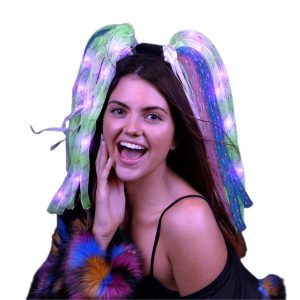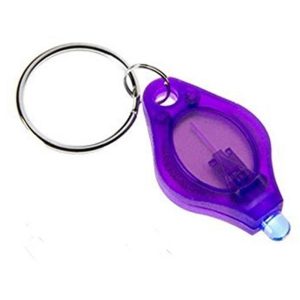UV Light vs. Black Light: What’s the Difference and Why It Matters
You’ve probably heard the terms “UV light” and “black light” used interchangeably. Whether you’ve seen them referenced in science, parties, or for forensic work, these terms can seem confusing. Are they the same thing? If not, what sets them apart, and why should it matter to you?
In this comprehensive guide, we will explore the similarities and differences between UV light and black light and how these distinctions affect their applications in science, art, security, and everyday life. By the end of this blog, you’ll understand how UV light and black light work, their differences, and how you can use each effectively for specific purposes.
I. What Is UV Light?
UV light, or ultraviolet light, is a type of electromagnetic radiation that lies just beyond the violet end of the visible light spectrum. This means humans cannot see it directly. UV light is divided into several subcategories based on its wavelength:
- UV-A (315-400 nm): Longwave UV, the least harmful to humans.
- UV-B (280-315 nm): Can cause sunburn and skin damage.
- UV-C (100-280 nm): The most dangerous form but usually blocked by the Earth’s atmosphere. Often used for sterilization.
UV light has many real-world applications, from disinfecting surfaces to curing adhesives and analyzing biological samples. However, prolonged exposure to UV radiation, particularly UV-B and UV-C, can be harmful to human skin and eyes.
II. What Is Black Light?
A black light is a specific type of UV-A light that emits longwave ultraviolet light, typically in the 365-400 nm range. While black lights emit some visible light (a faint violet or bluish glow), most of the radiation they produce is beyond human vision. When certain materials are exposed to black light, they fluoresce—absorbing the ultraviolet energy and emitting it as visible light.
Black lights are used in a variety of settings, including:
- Clubs and parties to make neon colors glow.
- Forensic investigations to reveal hidden substances.
- Authentication of currency and documents.
The key difference between black lights and other UV light sources lies in their intended use and wavelength range. Black lights are designed specifically to maximize fluorescence while being safe for occasional human exposure.
III. Comparing UV Light and Black Light: Key Differences
Although black light is technically a form of UV light, not all UV light is black light. The differences lie in their wavelengths, applications, and safety considerations. Below is a detailed comparison of the two:
1. Wavelength Differences
- UV Light: Encompasses a broad spectrum from 100 nm to 400 nm, divided into UV-A, UV-B, and UV-C.
- Black Light: Falls within the UV-A spectrum, usually between 365 nm and 400 nm. The wavelength is longer, making it safer and ideal for fluorescence.
2. Applications
- UV Light: Used in disinfection, sterilization, tanning, medical treatments, and forensic science.
- Black Light: Primarily used to detect fluorescent substances, create glowing effects in entertainment settings, and verify the authenticity of currency, IDs, and art.
3. Visibility and Light Emission
- UV Light: Most UV radiation is invisible to the human eye. Some UV sources emit a harsh blue or violet glow.
- Black Light: Emits a dim violet or bluish light along with UV-A radiation, which makes fluorescent objects and materials appear to glow in the dark.
4. Health and Safety Considerations
- UV-B and UV-C Light: Harmful to skin and eyes with prolonged exposure. UV-C is used in sterilization but requires strict precautions.
- Black Light (UV-A): Much safer for occasional use. Prolonged exposure may cause minor eye discomfort but is unlikely to cause serious harm unless exposure is extreme.
IV. Why Do Some Materials Glow Under Black Light?
The glowing effect seen under black light is due to a phenomenon called fluorescence. Some substances contain molecules that absorb UV-A radiation and then re-emit it as visible light. Here’s how it works:
- When black light shines on a fluorescent material, it excites the electrons within the molecules.
- The excited electrons release energy as visible light, which creates the glowing effect.
- This fluorescence disappears when the black light is removed because the electrons return to their normal state.
Common fluorescent materials include:
- Tonic water (quinine)
- Highlighters and neon paints
- Certain minerals and rocks
- Security threads on banknotes
V. Real-World Applications of UV Light and Black Light
1. UV Light Applications
- Medical Sterilization: UV-C light is used to kill bacteria and viruses, especially in hospitals and laboratories.
- Water Purification: UV-C light systems are also used to disinfect water by destroying harmful pathogens.
- Tanning Beds: UV-B radiation is responsible for triggering melanin production, resulting in tanning.
- Dental and Medical Procedures: UV light is used to cure adhesives in dentistry and to treat certain skin conditions like psoriasis.
2. Black Light Applications
- Entertainment and Parties: Black lights create a glowing effect on neon decorations, UV-reactive body paint, and white clothing, making them popular in clubs and parties.
- Forensics: Investigators use black lights to detect bloodstains, fingerprints, and bodily fluids that aren’t visible under regular light.
- Currency Authentication: Black lights help detect security threads and UV patterns on paper money to prevent counterfeiting.
- Art and Museums: Curators use black light to examine artworks for hidden details, overpainting, or signs of forgery.
VI. Which Should You Use: UV Light or Black Light?
Choosing between a UV light and a black light depends on what you need it for. Here’s a quick guide to help you decide:
- For Fluorescent Effects (Glow Parties, Art): Use a black light in the 365-400 nm range to make objects glow.
- For Detecting Counterfeit Money or IDs: A black light flashlight works well to reveal hidden UV patterns.
- For Forensic and Crime Scene Analysis: UV-A black lights are safe for scanning areas for evidence like fingerprints, while UV-C lights are used for disinfection purposes.
- For Disinfection and Sterilization: Use UV-C light (100-280 nm), but follow proper safety precautions to avoid exposure.
VII. Are Black Lights Safe?
One common question people have is whether black lights are dangerous. The good news is that black lights emit longwave UV-A light, which is relatively harmless compared to UV-B and UV-C light. However, prolonged or intense exposure can cause temporary eye discomfort, and individuals with certain skin conditions may be sensitive to UV-A radiation.
Safety Tips for Using Black Lights:
- Avoid staring directly into the black light for extended periods.
- Use UV-protective eyewear if you plan to work with black lights for long hours.
- Keep the black light away from children and pets during use.
VIII. Conclusion: Why the Difference Between UV Light and Black Light Matters
Understanding the difference between UV light and black light helps you make better decisions about which to use for different applications. While black lights are a specific type of UV-A light meant for safe, everyday use in entertainment, forensics, and security, other forms of UV light (like UV-B and UV-C) are essential for medical treatments, disinfection, and industrial processes.
Knowing when and how to use these lights can unlock a world of possibilities—from creating glowing party effects to authenticating banknotes to sterilizing surfaces with UV-C. Whether you are a scientist, artist, or hobbyist, mastering the use of UV and black lights can open new doors to experimentation, discovery, and fun.



